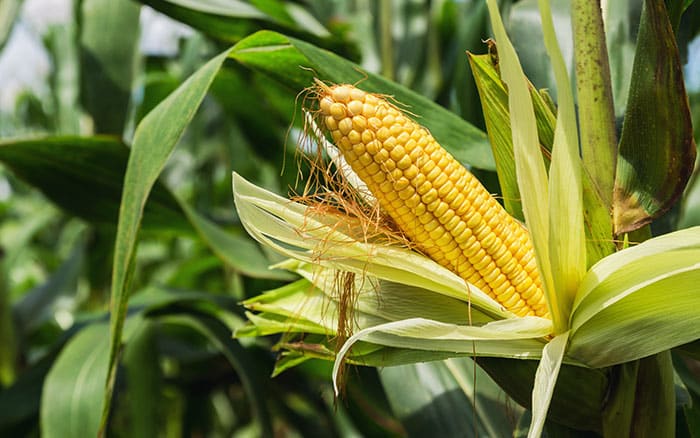Creating a mini allotment in your garden is a great way of establishing a space to grow big veg, and this time of the year is the perfect time to try your hand at planting some crops that you can harvest in autumn and winter, to add some homegrown produce to your cosy cooked meals later in the year.
Sweetcorn
You can plant out sweetcorn crops in June, by positioning them in a sunny but sheltered position with fertile soil about 30cm apart. Adding organic matter and fertiliser when planting will help them to grow successfully, also mulching with organic matter will help to retain moisture and keep weeds down.
They are quite a big crop, growing to 1.5 metres, so they may need some support from stakes.

When the tassels have transformed to a chocolate brown colour, test for ripeness by piercing a kernel with a fingernail. If the liquid that squirts out is watery then it is unripe, however if the liquid is creamy then the cob is ready to be harvested by twisting and pulling it sharply from the stem.
Pumpkins
Prepare for Halloween and spooky soups filled with pumpkin by growing your own. They’re a great crop to grow with children to watch them grow and turn a beautiful bright orange.
You can sow pumpkin seeds indoors in April to May, but young plants can be planted out in a sunny but sheltered spot in May or June.
Pumpkins are thirsty plants, so when planting them out, bury their plant pot next to them, fill it with water where it will gradually seep down into the soil, delivery much needed water to the roots.
You will know when the pumpkins are ripe because they will turn from green to orange. Around September and October, they will be ready to be harvested, but be sure to protect them from any early frosts.
Brussels sprouts
So, you’re prepared with your pumpkins for Halloween, but go one step further and prepare for Christmas by getting your Brussels sprouts ready.
May to June is the time to plant out young plants around 60cm between them, in a sunny and sheltered site. In September, mounding soil around the base of the plants will support them.
They can be harvested from September to March, starting with the lowest sprouts when they are firm and the size of a walnut. Harvest by snapping them off with a sharp tug downwards. All that’s left to do is get them to the kitchen and get them ready for your festive feast.
Companion planting

Choosing plants that help pollination and keep pests and planting them close to your crops is known as companion planting, many of these have strong scents which ward off pests.
Tagetes patula (French marigolds) are the perfect companion plant for vegetables such as brassicas, sweetcorn and beans and will keep pests away from your plot. They have a powerful fragrance and can be found in fiery reds, oranges and yellows. They are pretty and purposeful.
Salvia officinalis (sage) is strongly scented and will help to confuse pests that want to prey on your brassicas. Their flowers will attract bees to aid pollination, and you can also use it in your cooking to flavour many vegetable or meat dishes.
Protect your produce
Protect your produce by surrounding your mini allotment with a wire mesh fence to keep predators out, near my house rabbits are the main culprits! To keep your crops safe from aerial attacks, make a barrier using bamboo canes to support wire mesh as a cover. This will keep birds off your precious produce.

Leave A Comment